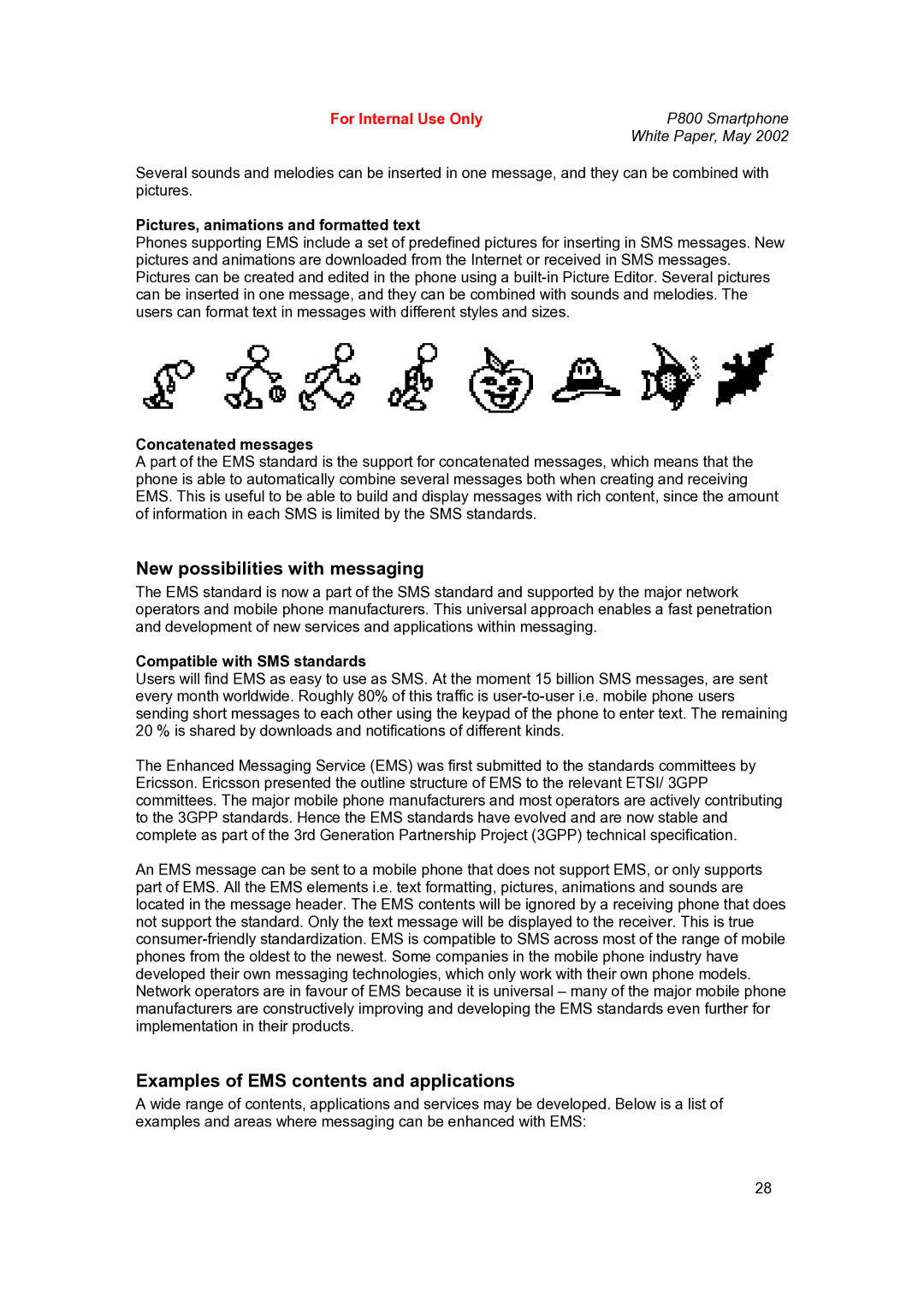
For Internal Use Only | P800 Smartphone |
| White Paper, May 2002 |
Several sounds and melodies can be inserted in one message, and they can be combined with pictures.
Pictures, animations and formatted text
Phones supporting EMS include a set of predefined pictures for inserting in SMS messages. New pictures and animations are downloaded from the Internet or received in SMS messages. Pictures can be created and edited in the phone using a
Concatenated messages
A part of the EMS standard is the support for concatenated messages, which means that the phone is able to automatically combine several messages both when creating and receiving EMS. This is useful to be able to build and display messages with rich content, since the amount of information in each SMS is limited by the SMS standards.
New possibilities with messaging
The EMS standard is now a part of the SMS standard and supported by the major network operators and mobile phone manufacturers. This universal approach enables a fast penetration and development of new services and applications within messaging.
Compatible with SMS standards
Users will find EMS as easy to use as SMS. At the moment 15 billion SMS messages, are sent every month worldwide. Roughly 80% of this traffic is
The Enhanced Messaging Service (EMS) was first submitted to the standards committees by Ericsson. Ericsson presented the outline structure of EMS to the relevant ETSI/ 3GPP committees. The major mobile phone manufacturers and most operators are actively contributing to the 3GPP standards. Hence the EMS standards have evolved and are now stable and complete as part of the 3rd Generation Partnership Project (3GPP) technical specification.
An EMS message can be sent to a mobile phone that does not support EMS, or only supports part of EMS. All the EMS elements i.e. text formatting, pictures, animations and sounds are located in the message header. The EMS contents will be ignored by a receiving phone that does not support the standard. Only the text message will be displayed to the receiver. This is true
Examples of EMS contents and applications
A wide range of contents, applications and services may be developed. Below is a list of examples and areas where messaging can be enhanced with EMS:
28
